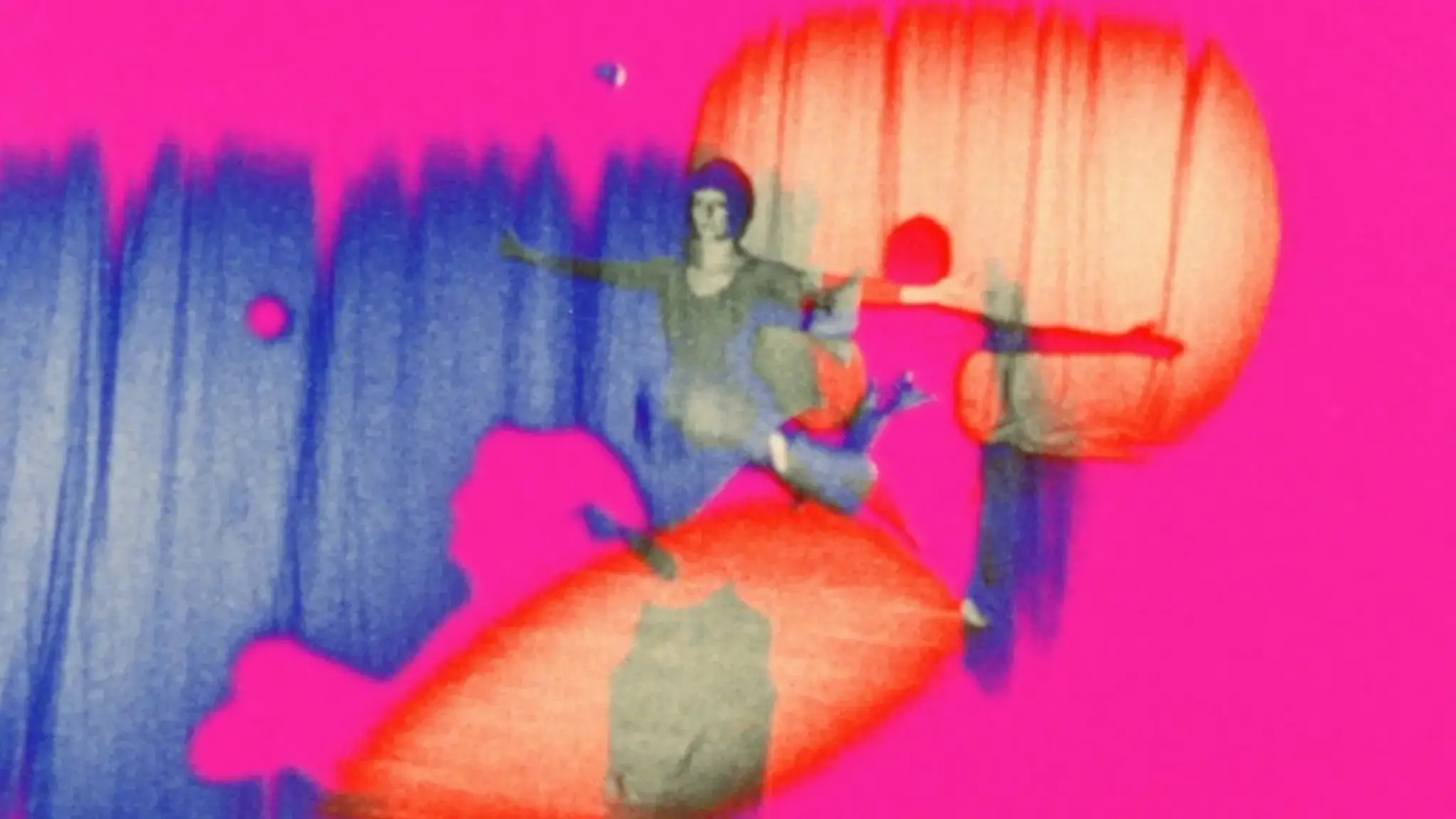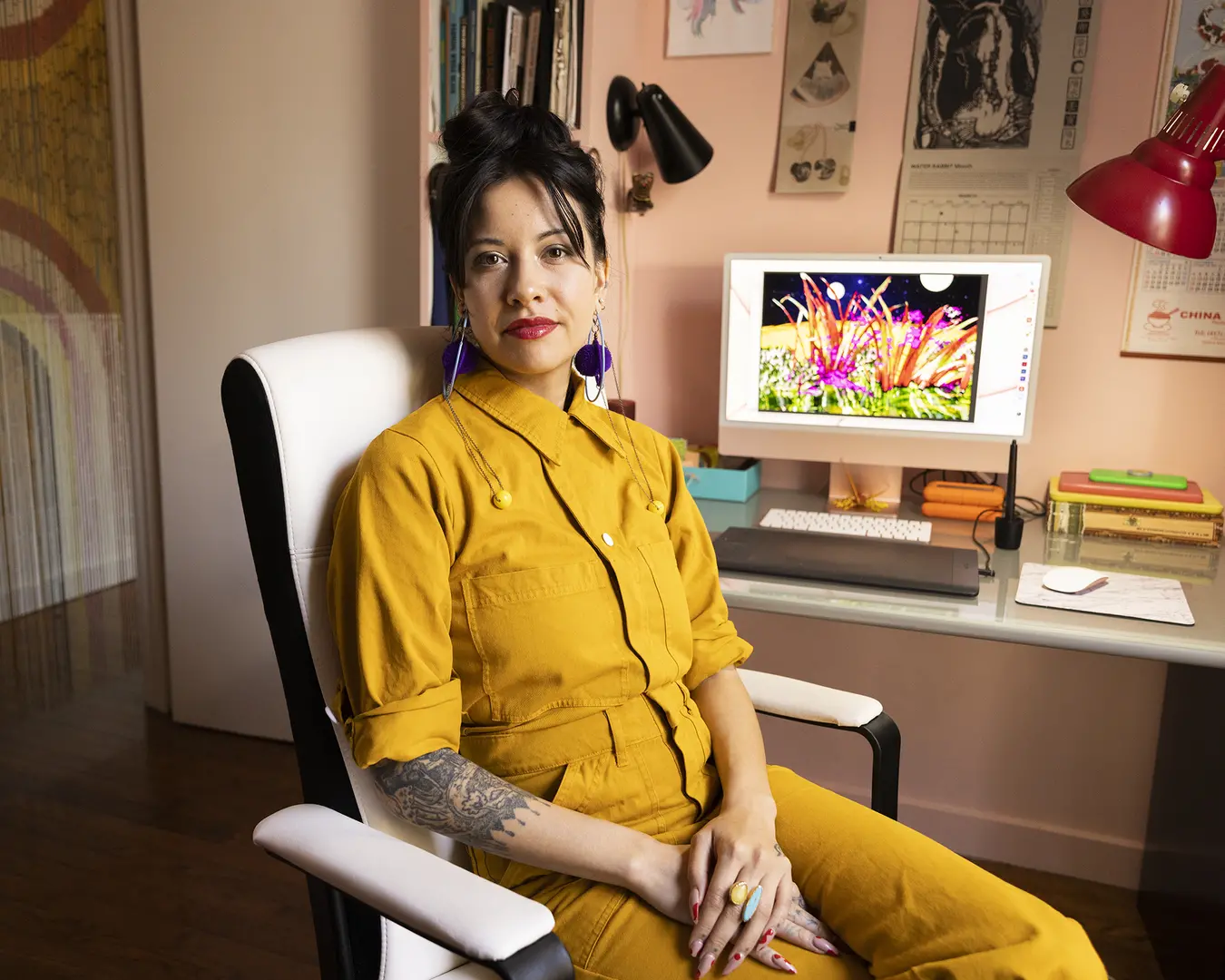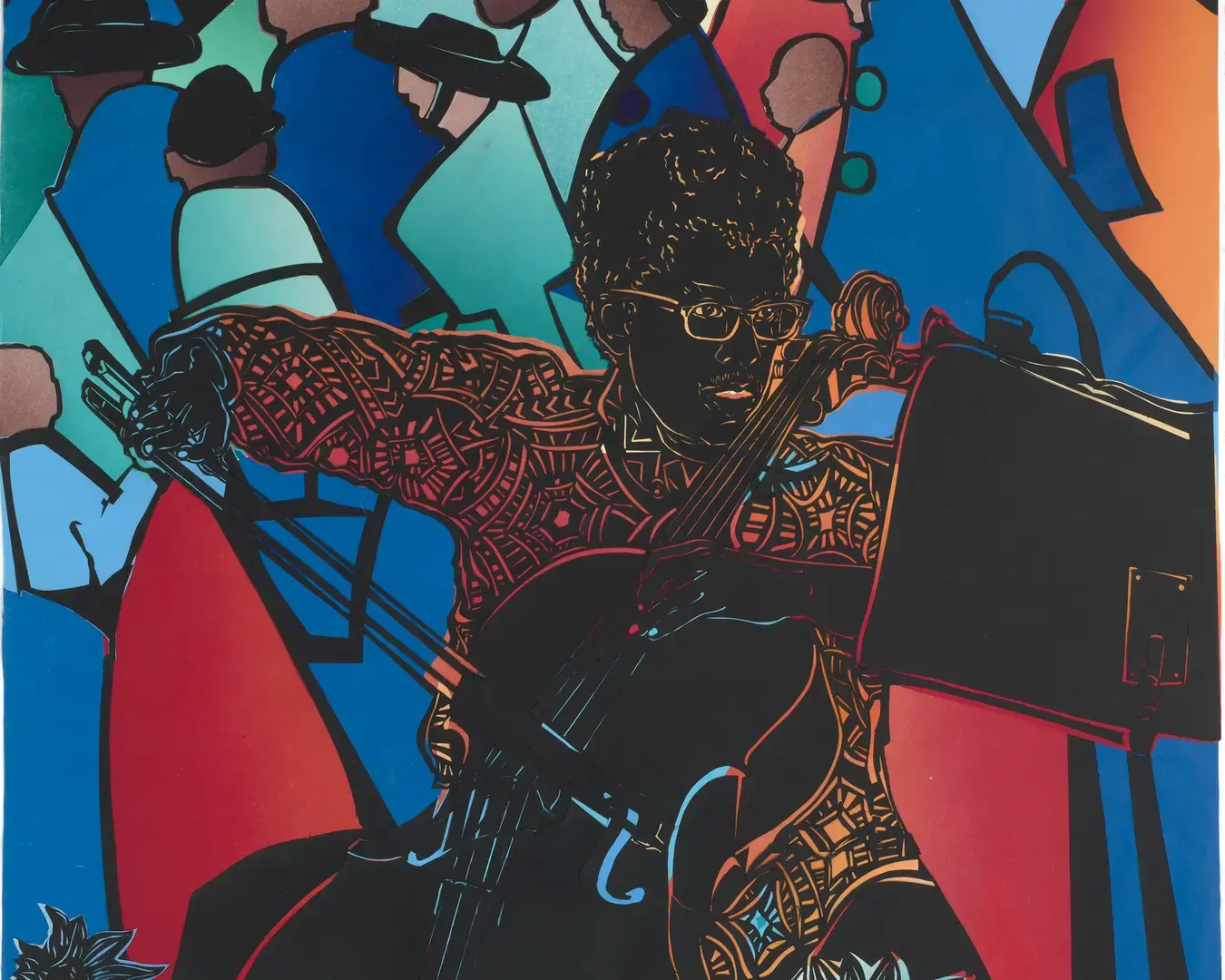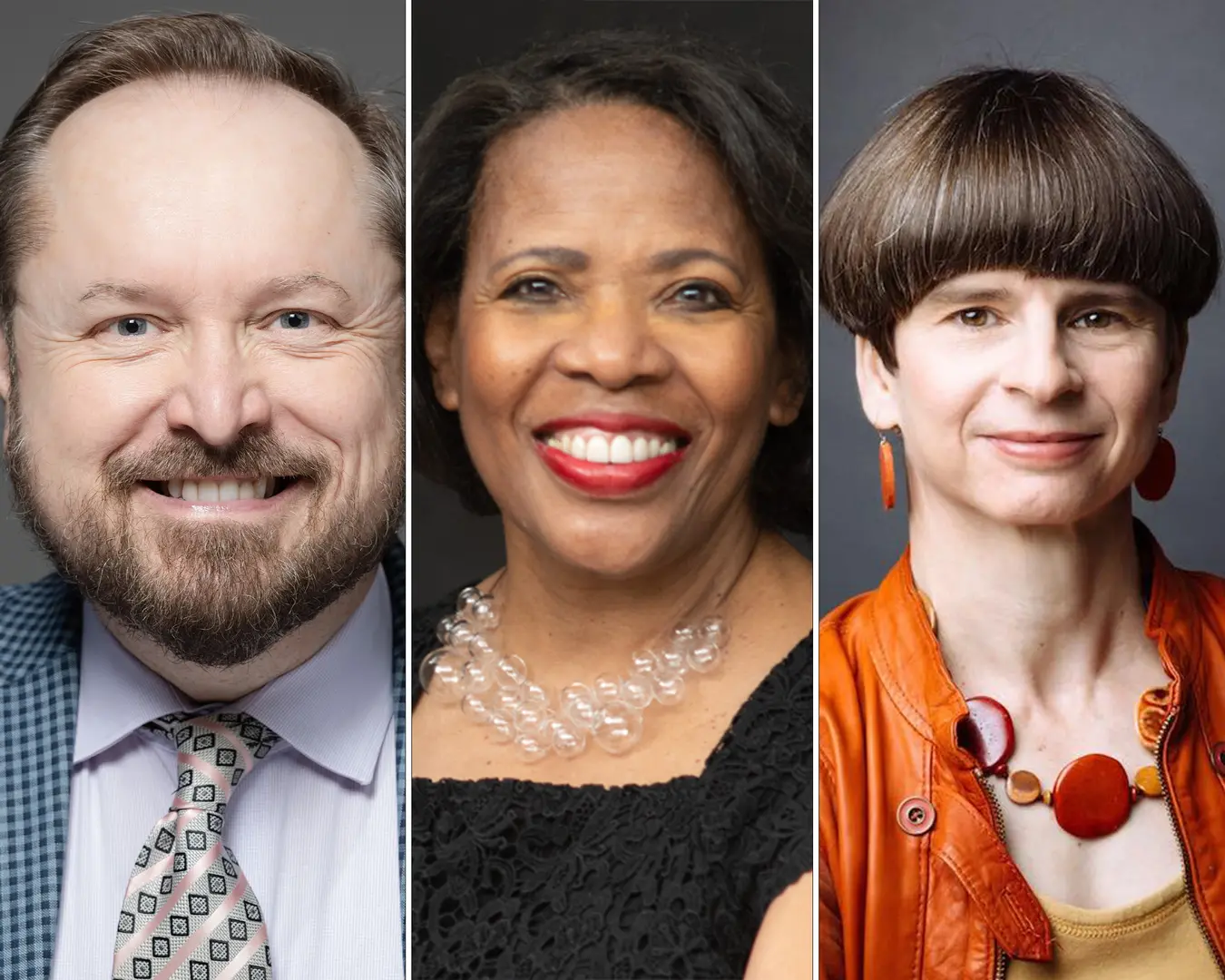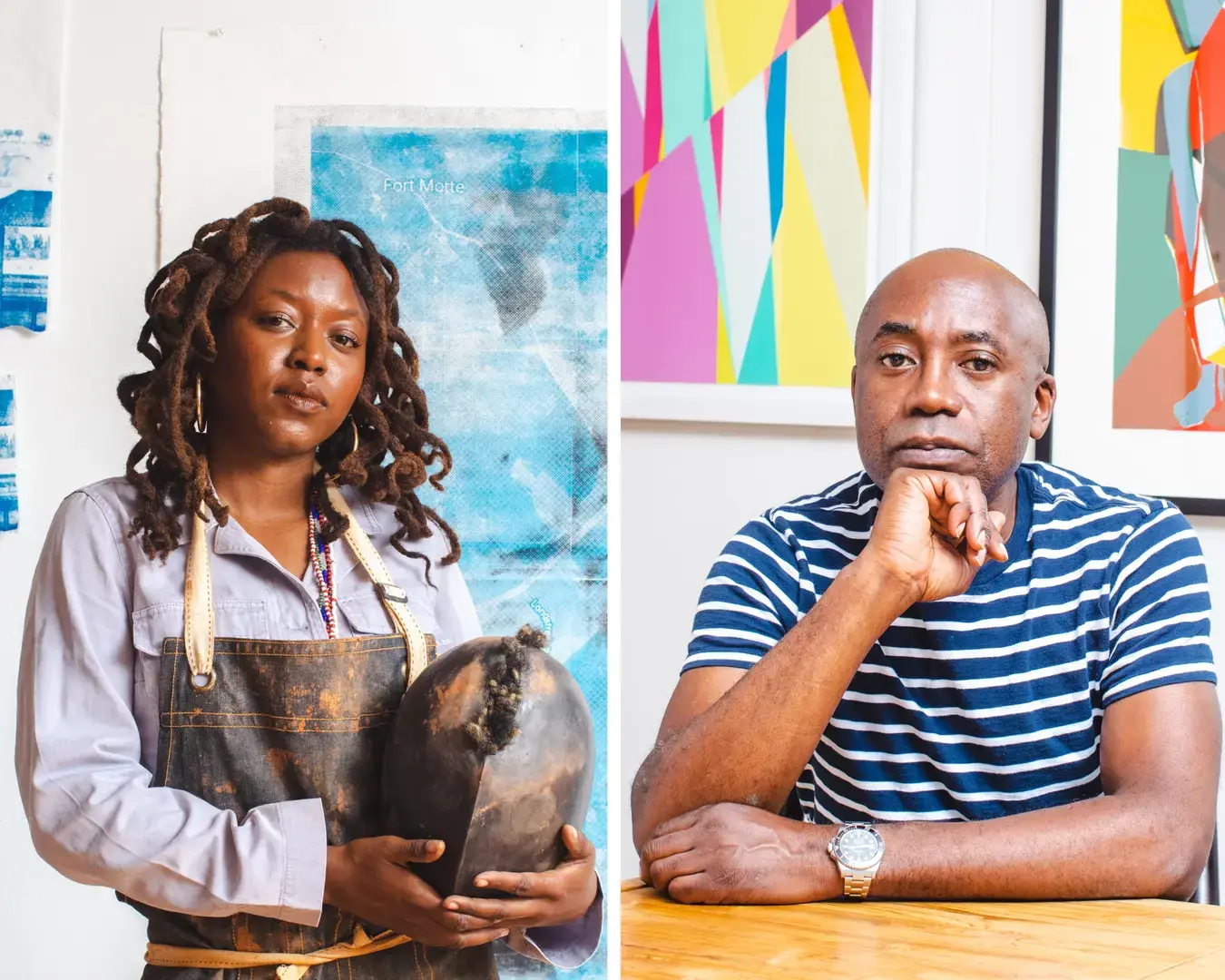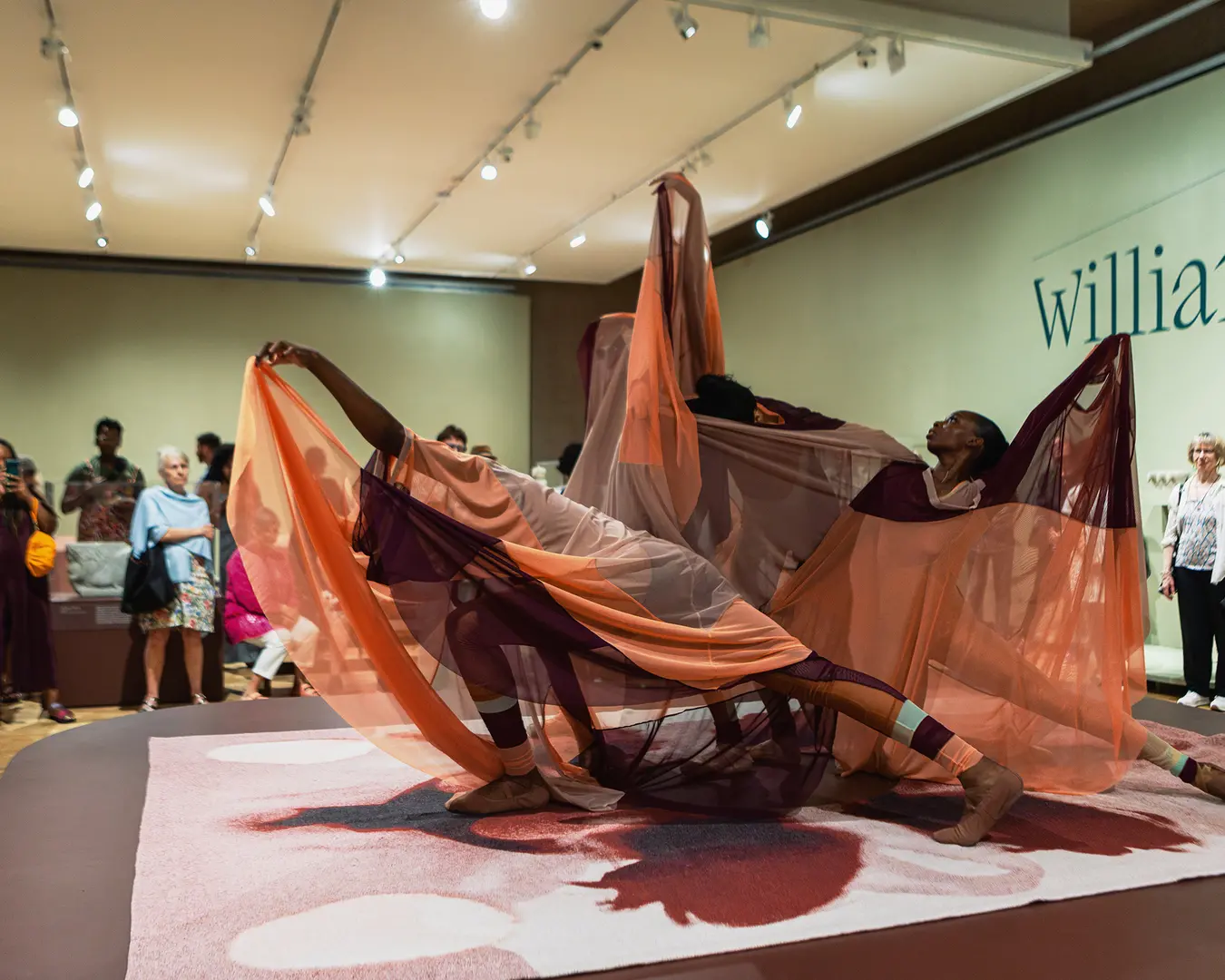The recent Center-funded exhibition, Making/Breaking the Binary: Women, Art & Technology 1968–1985, organized by Kelsey Halliday Johnson, surveyed a generation of pioneering female artists and related their work to the technology innovators who helped shape the information age. In conjunction with the project, we invited Johnson and media scholar Amy Beste of the School of the Art Institute of Chicago to reflect on the influence of the work of such artists as Dara Birnbaum, Beryl Korot, and Joan Jonas, who were early adopters of what was then the burgeoning realm of video art.
In the conversation that follows, we asked Beste and Johnson to begin by talking about how they consider the issues around the recognition of women artists—then and now—in their curatorial work, and to consider why women artists have often only received serious recognition later in their lives and careers.
Amy Beste
I primarily organize shows and screenings of contemporary and historical film and media art under the umbrella of an art school. I’d say that, very simply, I’m always actively looking for work by women to show. I have the great advantage of being able to see the impact these programs have on students and emerging artists, and understand how, in creating platforms for women artists, one is also creating opportunities for their ideas and approaches to inform future practices and bodies of work.
With regard to especially historical work, some form of [the late art historian] Linda Nochlin’s foundational question, “Why are there no great female artists?” is always in the back of my head. It’s led me to think closely about the economic, social, and cultural structures that determine where work is made, how it’s made, where and how it circulates, and how it’s received, that is, whether or not it’s even been understood as art.
Kelsey, I think those questions really speak to the way you organized Making/Breaking the Binary. You brought together a number of artists who pioneered approaches to and forms of technologically-driven art-making—some of which was not immediately recognized as art at the time because the artists were working outside of recognizable forms, or in circles outside of the established art world. And you also included projects like Radical Software, a journal published by the video collective Raindance, which was invested in information and resource sharing as a way to make this technology accessible and understandable to everyone. This is an ethos that acknowledges, at least to some degree, the structural inequities that stand in the way of creative production.
Kelsey Halliday Johnson
I’m glad you brought up Nochlin. Her passing [in October 2017] was such a huge loss and it re-emphasized how certain thinkers, art historians, and curators have had to really take activist roles to create visibility for these histories. The late composer and musician Pauline Oliveros took active issue with a nearly identical question published in an article in Musical America titled “Why have there been no great female composers?” Oliveros’ full-page response continues to make me laugh with its flippant reply and a follow-up question: “Why do men keep asking stupid questions?” She elaborated on this with an article and a comprehensive list of the available records by female composers that was published in The New York Times. It was shockingly slim for the 1970s.
I had a very complicated moment when I went to visit the archives at Bell Labs in preparation for Making/Breaking the Binary in late 2016. I saw the original 16mm celluloid copy of Pixillation, the first of many mesmerizing computer animations between Lillian Schwartz and Ken Knowlton and made at Bell Labs, using Knowlton’s self-written computer animation language EXPLOR. The label on the Eastman Kodak case for the film reel as it was filed away merely said “Knowlton-Pixillation.” It just re-emphasized the advocacy that had to happen in regard to visibility. I appreciate your verbiage of “actively looking,” because I think not only do we have to always be cognizant of inserting women in important histories where they were perhaps omitted before, but also be actively researching and asking questions about the labels we read and the histories we accept. There are lots of wonderful female artists, especially in collaborations, who were unduly written out of histories. I’m thinking of electronic music pioneer Delia Derbyshire who was only finally acknowledged in the Doctor Who credits on their 50th anniversary episode. There are two main needs: the important curatorial work of creating an elevated platform of visibility and context for these works in public forums, and then there is the art historical work of attribution and the stories and power narratives around these works.
KHJ
Questions about an equal space in art histories for women artists are very real, and that is not to discredit the tremendous accomplishments, successes, and recognitions made during the lifetimes of many of the women artists. The late career recognition boom for female artists is a historical trend and further reaffirms that we need to constantly create spaces, opportunities, and critical dialogue around young female artists in our contemporary field. I want to constantly challenge myself and my peers to write progressive histories that render visible the tremendous movements that aren’t public narratives. These comments admittedly don’t even point to the tip of the iceberg for trans and gender non-binary artists.
Staying abreast of the art market interests me less these days, but it is certainly a quantifiable set of data points that show how few women artists can break into certain economies of perceived “value” of their work. Financial value should not be a mark of excellence, but it’s important to point out that these issues of recognition, posterity, and history also perpetuate systematically discriminatory financial structures for female artists. It is part and parcel of the fact that American women still make 80 cents on the dollar to the average American man, and worse, black women only make 67 cents on the dollar of every white man. I know that’s a drastic parallel, but do those financial ramifications concern you, or seem relevantly tied to a broader art historical legacy, Amy?
AB
This is such an important point. These systems have real, material ramifications on women artists, from the ways they have to organize their time to support their work, to their financial well-being overall.
The art world is not separate from the rest of the world, and reflects all the kinds of structural inequities and unconscious biases we see elsewhere. But there have been important shifts in recent years, as curators attempt to redress historical gaps, by rehanging permanent collections to focus on women previously sidelined (I’m thinking in particular of Helen Molesworth and her work at MOCA LA and Frances Morris at Tate Modern), or organizing shows that put works by women at their center. This work is already having an impact on museum collections, but there is a long way to go. This is especially important in the case of technologically-driven artwork. Without the stewardship of museums and archives, many of these works will literally disappear with the obsolescence of mechanical components and knowledge.
KHJ
I completely agree. Beyond the nuts and bolts of preserving the works, we simply must revisit these histories because most people still operate with stereotypes about the supposed gendering of technology culture as masculine. Young women should be taught to code and tinker and hack en masse. It’s very much our history, too.
I’m really excited to read Maura Reilly’s book, Curatorial Activism: Towards an Ethics of Curating, which I think will be a significant text in advocating for the act of putting together exhibitions and histories driven by a desire to halt the ghettoization or exclusion of that group from master narratives of art. 2017 has been lucky to see so much great curatorial activity fleshing out a better understanding of the late 20th century with the Brooklyn Museum’s inspiring We Wanted a Revolution: Black Radical Women 1965– 1985, and the Hammer Museum’s Radical Women: Latin American Art, 1960–1985.
AB
There are numerous barriers to women achieving and receiving recognition in these areas, ranging from implicit bias to blatant discrimination. I don’t even have to speculate, as there has been a lot of research and reporting on this issue, including in The New York Times (e.g. “Why Are There Still So Few Women in Science?”), the American Association for the Advancement of Science (e.g. “Barriers for women in STEM”), and technology and business publications like Fast Company (e.g. “Why Are Women Leaving Science, Engineering, and Tech Jobs?”).
KHJ
Those are great reference points. I found the parallel histories of women in tech and women in new media art overwhelming, which was generative for Making/Breaking the Binary. Many critical STEM breakthroughs were made by women, including the birth of computer programming, and yet that widely goes unsung. I had the great privilege of introducing the film Hidden Figures as this project was developing. Katherine Johnson and Langley’s West Computers prior to this had truly been one of the greatest untold American stories of the space age. Margot Lee Shetterly’s research and the full Hollywood treatment of the story were well deserved and overdue.
In my project, a secondary goal was to position this generation of artists as media pioneers alongside their technological counterparts, so there was also a timeline about the history of women in technology. It fittingly starts with Ann Smith Franklin who operated her own printing press and was the first female newspaper editor in America. The press she owned was the press her brother-in-law, Benjamin Franklin, learned to set type on. All around Philadelphia he is memorialized for his work in early technologies, but you would be hard-pressed to find many people who knew who Ann Smith Franklin was. Ada Lovelace, who wrote the first computer program, is fortunately a little better known. I’m incredibly inspired by contemporaries like Limor Fried aka ladyada (an homage to Ada Lovelace) and her work with Adafruit, a significant platform for self-educating about electronics. That kind of woman-driven open source ethos and skill-sharing is already changing the tides.
AB
One of your show’s major themes is the way women were interested in using technology to explode social and aesthetic categories. I see this ethos in the work of a number of contemporary artists using technology. For example, Hyphen-Labs, a collective of artists, designers, and engineers whose recent works address and correct for the ways contemporary imaging and game technologies surveil or overlook black bodies. These include a textile printed with a pattern that tricks facial detection systems, and works in virtual reality. I’m thinking also of Sondra Perry, who makes work that examines the way racial bias is built into technology itself.
From my perspective, the legacies of women artists like those featured in Making/Breaking the Binary take many forms—some, like electronic musician and composer Suzanne Ciani, created approaches to machines that proved influential to later artists. Others, like Beryl Korot, helped to develop communities of artists and critics in addition to their own influential projects. Still others, like Dara Birnbaum, made works whose influence can be seen across multiple generations—from Animal Charm’s culture jamming videos in the mid-1990s, to the collage GIFs of contemporary new media artist Lorna Mills, among many others.
KHJ
I hadn’t previously thought about Birnbaum and her relationship to GIF culture, but if you think about her stuttering, repeating, twirling Wonder Woman and the humor, absurdity, and new meaning mined in that action, it is a proto-GIF in the making. That’s brilliant.
I was heartened that a local critic, artist, and educator brought his teenage daughter to see one of our screenings at Lightbox Film Center, and she really responded to Vasulka Inc.’s Bad. Steina and Woody’s work with glitch aesthetics pioneered a whole mode of formalism, experimentation, and realm of conceptual practice that so many artists today are indebted to. Those connections need to be more thoroughly excavated and the evidence put on view. There’s some great curatorial work to be done creating exciting dialogues between early digital artists and younger or more recent generations. Some things that feel fresh and exciting today were radical and already happening decades ago, and those older things can be revisited in new ways in our current moment. They each have something to teach one another, and perhaps some of these under-recognized artists will gain further relevance as they were simply just ahead of their time.
AB
As your exhibition demonstrates, artists are always interested in working with new technologies— even before they become broadly available. I’m thinking of Lillian Schwartz, who made a number of films using advanced computer imaging technologies while at Bell Labs in the 1970s, or Lynn Hershman Leeson’s interactive video Lorna from the mid-1980s. I think the same can be said today.
KHJ
I’m really excited by a lot of young female and gender-queer net artists, poets, and performers who are once again investigating the performance of personality and construction of identity in our shared digital realm. To think of the ties between the early feminist video art legacies and those digital works today is really exciting. I’m hesitant, but mostly curious, to see where artist-driven virtual reality work can continue to go. With actual technology interfaces there is a lot of critical design work being done, and artist-driven apps that really question our relationship to the virtual and the social. This new world also begets new relevancy for the slow looking of painting and sculpture traditions, and a desire to keep alive obsolete technologies. We’re on the brink of tremendous new frontiers, and that only reinforces why revisiting these early technology histories is crucial to understanding where our contemporary moment came from.
